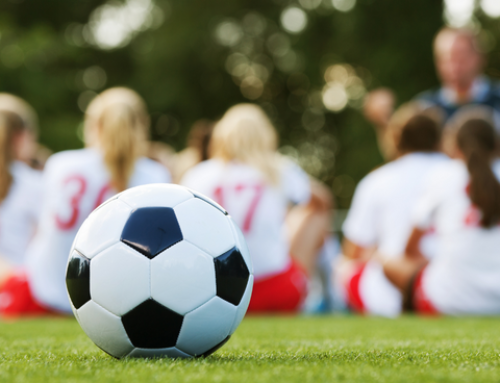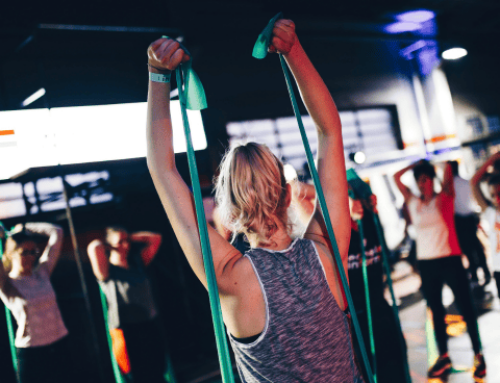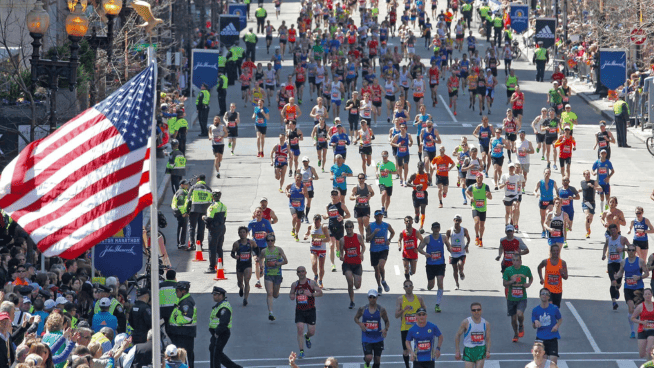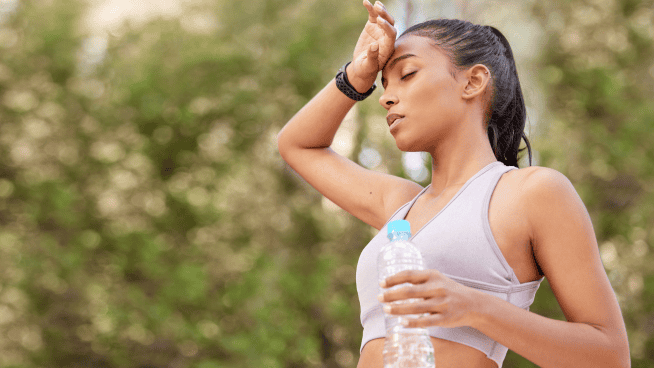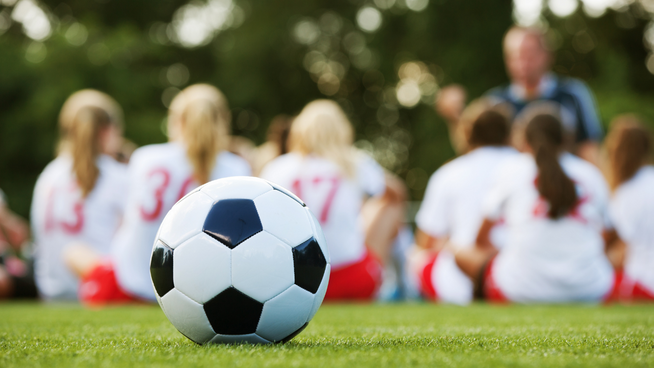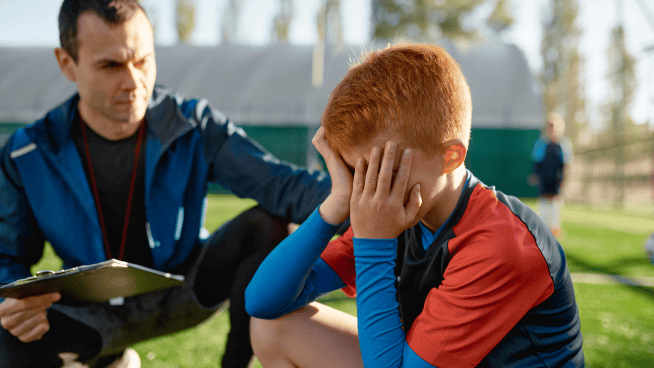Five Strength Training Exercises
You’ve seen LeBron’s program. You know what makes LT a warrior. You’ve had a taste of Freddy’s training. But none of it will help you if your form sucks. Performing any lift without the right technique will compromise even the most ridiculous training program.
To help you master form and technique for five common but vitally important lifts, STACK scored some insider info from Al Biancani, former head strength and conditioning coach of the Sacramento Kings and Monarchs. As one of the country’s top strength and conditioning experts, Biancani helps you understand the benefits, key points, common errors and risks involved in performing the Lat Pulldown, Squat, Power Clean, Bench Press and Lunge. Let the expertise begin.
1. Lat Pulldown
Benefits
• Works back and latissimus
• Develops shoulder stability to prevent injury
Description
• Use lat pulldown machine
• Grip bar slightly wider than shoulder width
• Pull bar down to mid chest
• Control bar back to starting position
Helpful Hints
• When the bar gets to your chest, squeeze your shoulder blades together
Common Errors
• Leaning back too far
• Not pulling the bar down far enough
• Pulling the bar down too far on your chest
• Pulling the bar behind your neck
Potential Risks
• Pulling the bar behind your neck stresses the rotator cuff
• Leaning back too far stresses your lower back
Key Coaching Points
• Start by pulling your shoulder blades down your back
• Keep your body upright, head in a neutral position and elbows to your sides. Your elbows should not go past your body.
2. Squat
Benefits
• Strengthens lower extremities, including hamstrings, quads, hips and glutes
• Helps improve jumping, running and other athletic movements
• Strengthens abdominals, low back and core region
Description
• Begin in athletic stance with toes slightly pointing out
• Pick eye-level focus point on wall
• Squat down with control and good posture until thighs are parallel to ground
• Keep weight back on heels
• Drive upward out of squat into starting position keeping chest out
Helpful Hints
• The preferred squat angle is between 70 and 90 degrees; squatting deeper than this stresses your knees and low back
Common Errors
• Bending too far forward
• Not letting your butt go back during descent for balance
• Knees moving past your toes
• Letting your heels come off the ground
• Not having proper knee alignment for ascent and descent
Potential Risks
• Hurting your low back
• Blowing out a knee
Key Coaching Points
• Look straight ahead
• Keep the bar on the upper part of your traps
• As you descend your butt should move back a little
• Point left foot to 11 o’clock and right foot to 1 o’clock
• Keep your knees directly in line with your feet during descent and ascent
• Don’t let your knees shift past your toes
3. Power Clean
Benefits
• Develops total body explosiveness
• Improves speed, strength, vertical and coordination
Description
• Start with bar touching shins
• Grip bar just outside athletic stance
• Get into deadlift position wi h back locked, shoulders up and abs and chest flexed
• Begin initial pull by extending hips and knees
• Move into second pull when bar is just above knees
• Explode by forcefully shrugging and fully extending hips, knees and ankles
• Pull bar up keeping it close to chest
• Drop under bar and catch along front of shoulders in athletic stance with knees bent
Helpful Hints
• Practice basic movements with a broomstick
• If you use a wrap or anything similar, you have to be able to rotate your wrists under the bar; when the wraps are too tight, your ability to catch the bar is affected
Common Errors
• Traveling or jumping forward during the lift
• Raising hips too early
• Not fully extending your hips, knees and ankles
• Bending your elbows during shrug
• Moving bar in circular fashion
• Not driving your elbows forward during catch
• Not dropping under the bar
Potential Risks
• Injuring your back, knees and shoulders
Key Coaching Points
• Bring the bar up in a linear movement rather than a circular one
• Make sure you have a powerful shrug of the shoulder girdle while maintaining straight arms
• Don’t bend your elbows until you’ve got the bar up in a high pull position
• Make sure to get on the balls of your feet
• When you drop under the bar to catch it, keep your elbows forward and bend your knees to cushion your legs
• When catching the bar, you should almost be at a quarter squat
4. Bench Press
Benefits
• Develops upper body strength, chest, shoulders and triceps
• Improves pushing motion, common in contact sports
Description
• Lie on back on bench
• Grip bar slightly wider than shoulder width
• Lower bar until it touches nipple level
• Drive bar up and toward chin until arms are straight
Helpful Hints
• Make sure you exhale while pushing
• For athletes with rotator cuff issues, use a pad to avoid moving the bar down to your chest
• To avoid arching your back, put your feet up on the bench
Common Errors
• Letting your elbows move too far away from your body
• Bouncing the bar off your chest
• Don’t arch your back—it’s terrible for you!
Potential risks
• Bouncing the bar off your chest can potentially break the sternum
• Bringing the bar all the way to your chest—especially with heavy weights— can stress your rotator cuff
Key Coaching Points
• When the bar is down toward your chest, it should be at nipple height
• These non-linear, semicircle movements create a power curve
• On the ascension there should be a slight curve to the path of the bar to where it’s just between your clavicles and voice box
• Grip bar slightly wider than shoulder width
5. Lunge
Benefits
• Strengthens quads, glutes and hamstrings
• Training one leg at a time can prevent strength imbalances
• Works unilateral strength and balance of lower extremities
Description
• Begin with bar on back in standing position
• Step forward into lunge position keeping front knee behind toes
• Lower down until back knee almost touches ground
• Push back into standing position without changing torso angle
Helpful Hints
• As you are lowering the weight to the ground, you should feel like you are lowering your butt into sitting position into a chair
• Do not change the angle of your torso throughout range of motion
• At first, perform lunges holding a dumbbell in each hand; progress to a weighted bar on your back
Common Errors
• Letting your knee move over your toes
• Leaning too far forward
Potential Risks
• Low back and knee injuries
Key Coaching Points
• Do not bend your torso too far forward
• Stay in as comfortable an upright position as possible
• Do not lean/waiver to the side
• Don’t let knee shift past toes
• Drop your back knee to just above the ground
• Keep your lower leg and knee of your forward leg directly aligned with your ankle
RECOMMENDED FOR YOU
MOST POPULAR
Five Strength Training Exercises
You’ve seen LeBron’s program. You know what makes LT a warrior. You’ve had a taste of Freddy’s training. But none of it will help you if your form sucks. Performing any lift without the right technique will compromise even the most ridiculous training program.
To help you master form and technique for five common but vitally important lifts, STACK scored some insider info from Al Biancani, former head strength and conditioning coach of the Sacramento Kings and Monarchs. As one of the country’s top strength and conditioning experts, Biancani helps you understand the benefits, key points, common errors and risks involved in performing the Lat Pulldown, Squat, Power Clean, Bench Press and Lunge. Let the expertise begin.
1. Lat Pulldown
Benefits
• Works back and latissimus
• Develops shoulder stability to prevent injury
Description
• Use lat pulldown machine
• Grip bar slightly wider than shoulder width
• Pull bar down to mid chest
• Control bar back to starting position
Helpful Hints
• When the bar gets to your chest, squeeze your shoulder blades together
Common Errors
• Leaning back too far
• Not pulling the bar down far enough
• Pulling the bar down too far on your chest
• Pulling the bar behind your neck
Potential Risks
• Pulling the bar behind your neck stresses the rotator cuff
• Leaning back too far stresses your lower back
Key Coaching Points
• Start by pulling your shoulder blades down your back
• Keep your body upright, head in a neutral position and elbows to your sides. Your elbows should not go past your body.
2. Squat
Benefits
• Strengthens lower extremities, including hamstrings, quads, hips and glutes
• Helps improve jumping, running and other athletic movements
• Strengthens abdominals, low back and core region
Description
• Begin in athletic stance with toes slightly pointing out
• Pick eye-level focus point on wall
• Squat down with control and good posture until thighs are parallel to ground
• Keep weight back on heels
• Drive upward out of squat into starting position keeping chest out
Helpful Hints
• The preferred squat angle is between 70 and 90 degrees; squatting deeper than this stresses your knees and low back
Common Errors
• Bending too far forward
• Not letting your butt go back during descent for balance
• Knees moving past your toes
• Letting your heels come off the ground
• Not having proper knee alignment for ascent and descent
Potential Risks
• Hurting your low back
• Blowing out a knee
Key Coaching Points
• Look straight ahead
• Keep the bar on the upper part of your traps
• As you descend your butt should move back a little
• Point left foot to 11 o’clock and right foot to 1 o’clock
• Keep your knees directly in line with your feet during descent and ascent
• Don’t let your knees shift past your toes
3. Power Clean
Benefits
• Develops total body explosiveness
• Improves speed, strength, vertical and coordination
Description
• Start with bar touching shins
• Grip bar just outside athletic stance
• Get into deadlift position wi h back locked, shoulders up and abs and chest flexed
• Begin initial pull by extending hips and knees
• Move into second pull when bar is just above knees
• Explode by forcefully shrugging and fully extending hips, knees and ankles
• Pull bar up keeping it close to chest
• Drop under bar and catch along front of shoulders in athletic stance with knees bent
Helpful Hints
• Practice basic movements with a broomstick
• If you use a wrap or anything similar, you have to be able to rotate your wrists under the bar; when the wraps are too tight, your ability to catch the bar is affected
Common Errors
• Traveling or jumping forward during the lift
• Raising hips too early
• Not fully extending your hips, knees and ankles
• Bending your elbows during shrug
• Moving bar in circular fashion
• Not driving your elbows forward during catch
• Not dropping under the bar
Potential Risks
• Injuring your back, knees and shoulders
Key Coaching Points
• Bring the bar up in a linear movement rather than a circular one
• Make sure you have a powerful shrug of the shoulder girdle while maintaining straight arms
• Don’t bend your elbows until you’ve got the bar up in a high pull position
• Make sure to get on the balls of your feet
• When you drop under the bar to catch it, keep your elbows forward and bend your knees to cushion your legs
• When catching the bar, you should almost be at a quarter squat
4. Bench Press
Benefits
• Develops upper body strength, chest, shoulders and triceps
• Improves pushing motion, common in contact sports
Description
• Lie on back on bench
• Grip bar slightly wider than shoulder width
• Lower bar until it touches nipple level
• Drive bar up and toward chin until arms are straight
Helpful Hints
• Make sure you exhale while pushing
• For athletes with rotator cuff issues, use a pad to avoid moving the bar down to your chest
• To avoid arching your back, put your feet up on the bench
Common Errors
• Letting your elbows move too far away from your body
• Bouncing the bar off your chest
• Don’t arch your back—it’s terrible for you!
Potential risks
• Bouncing the bar off your chest can potentially break the sternum
• Bringing the bar all the way to your chest—especially with heavy weights— can stress your rotator cuff
Key Coaching Points
• When the bar is down toward your chest, it should be at nipple height
• These non-linear, semicircle movements create a power curve
• On the ascension there should be a slight curve to the path of the bar to where it’s just between your clavicles and voice box
• Grip bar slightly wider than shoulder width
5. Lunge
Benefits
• Strengthens quads, glutes and hamstrings
• Training one leg at a time can prevent strength imbalances
• Works unilateral strength and balance of lower extremities
Description
• Begin with bar on back in standing position
• Step forward into lunge position keeping front knee behind toes
• Lower down until back knee almost touches ground
• Push back into standing position without changing torso angle
Helpful Hints
• As you are lowering the weight to the ground, you should feel like you are lowering your butt into sitting position into a chair
• Do not change the angle of your torso throughout range of motion
• At first, perform lunges holding a dumbbell in each hand; progress to a weighted bar on your back
Common Errors
• Letting your knee move over your toes
• Leaning too far forward
Potential Risks
• Low back and knee injuries
Key Coaching Points
• Do not bend your torso too far forward
• Stay in as comfortable an upright position as possible
• Do not lean/waiver to the side
• Don’t let knee shift past toes
• Drop your back knee to just above the ground
• Keep your lower leg and knee of your forward leg directly aligned with your ankle


